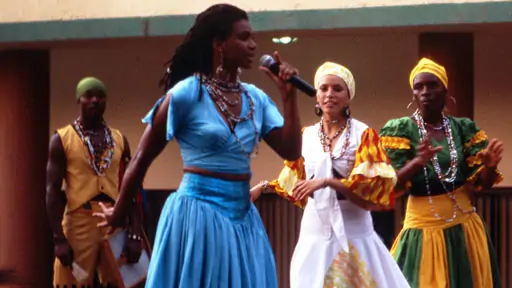Indigenous Calendar February, 2012: Garifuna Tradition in Honduras

When it comes to the indigenous peoples of Central America, most people think first of the different Maya subgroups that have lived there for centuries. While the Maya today survive in large numbers they speak only about 10% of the 200 or so indigenous languages of Central America. While it is still debated exactly how the Americas were first settled it is known that the Maya were not the first settlers to Central America. Nor are they the most recent.
I was on my way to western Honduras from Belize, via Guatemala. I'd chosen to enter Honduras at the northern-most Guatemalan land border crossing. The Caribbean coast here is warm with clear, blue water and it makes an idyllic stop-off point for any traveler. From southern Belize all the way to northern Honduras I'd seen and met many people who were not predominantly Hispanic, Amerindian or Mestizo: instead they represented a mixture of these groups as well as West African.
They are the Garinagu (or Garifuna as many of them now prefer to be called). Although they have lived on this Caribbean coast for only two hundred years their history in the Caribbean goes back a further two hundred years to European colonization and the trans-Atlantic slave trade.
The Garifuna who now live along the Atlantic coast of northern Central America have kept much of their tradition and culture remarkably intact. This includes the Garifuna language, religious practice (a mixture of West African and Carib Animism and Catholicism) and music and dance. The latter are most famously performed in a form known as punta.
I arrived in Tela — my last stop before turning south — early in the afternoon. It was a Sunday and, being a small town, it was very quiet. I found a hotel and freshened up from my traveling. The room was stuffy so I stepped outside for some fresh air and heard loud music that was clearly a live performance. It sounded too professional to be like the impromptu signing and dancing I'd witnessed a few times during the past few days. So I followed my ears and to my amazement discovered a festival of traditional Garifuna song and dance going on in the town square.
There was no admission price and only about a hundred spectators. I went back to my hotel to get my camera and this photo was one of the results. I remember wondering whether any of these performers' ancestors in West Africa might have been doing something similar just a few hours earlier.
If you enjoyed reading this article, please consider supporting independent, advertising-free journalism by buying us a coffee to help us cover the cost of hosting our web site. Please click on the link or scan the QR code. Thanks!


